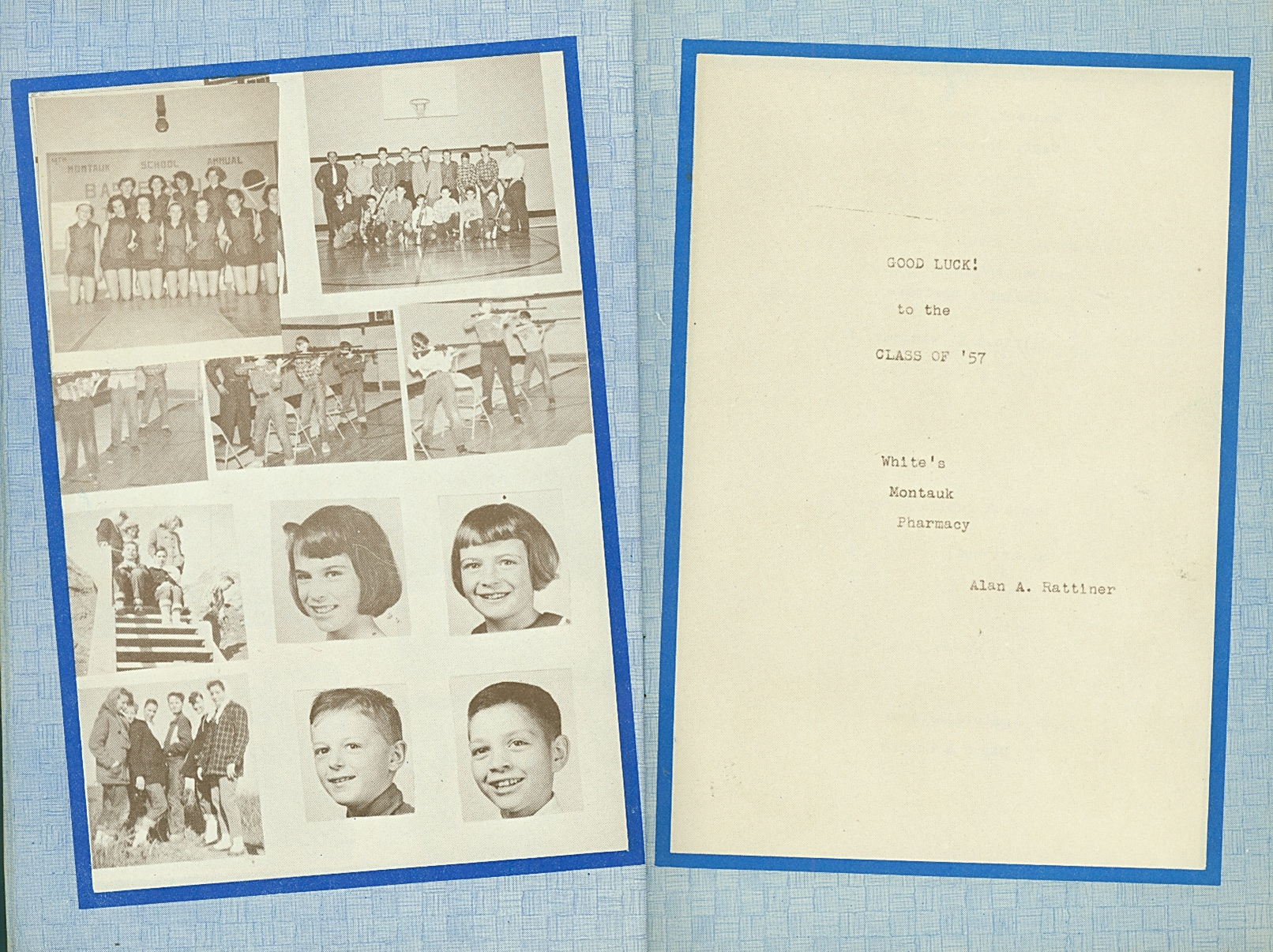
Josh Odom recently discovered more than half a century’s worth of yearbooks in his new office as superintendent and principal of the Montauk School. The oldest ones, a complete set that begins in 1953-54 and ends with the 1964-65 school year, are bound in a hinged wooden cover. The students’ and teachers’ names were added first by hand and then, in later years, with a raised-print label-maker.
Some of the yearbooks and the photos therein are now on exhibit in a display case in the Montauk Library’s Local History Center. The photographs start out in black and white, eventually morphing into color and moving away from the primitive wooden cover and into green, professionally bound volumes.
While the Montauk School’s yearbooks are on temporary loan for the exhibit, the Montauk Library also has some yearbooks of its own. Quite a few in the series are missing from the archival collection, however, which could use donations of Montauk School yearbooks from any year before 1955 as well as from 1956, 1959-1964, 1966-1979, 1984-1985, and 2000-2023.
The photograph above comes from a yearbook in the library’s archives. It’s interesting that there seems to be so much emphasis on marksmanship in 1958 beside the girls basketball team and perhaps a field trip or two. And who, pray tell, are the four students whose faces are so prominently featured?
The advertisement on the facing page indicates that White’s Pharmacy was then owned by Al Rattiner, who bought the Main Street business from Richard White Sr. in the mid-1950s before building the current large building on the Circle in the 1960s. The grown children of Al Rattiner, who died in 1997, sold White’s Drug and Department Store as recently as last December.
“Yearbooks serve as historical records, preserving educational institutions’ traditions, successes, and trends,” says the website of Irvin Simon Photographers, a company that specializes in school pictures. “They document notable events, offering insight into the culture of a specific era. Yearbooks are also valuable resources for future generations of researchers and historians, enabling them to explore the past through the eyes of those who lived it.”
Well sure. But it’s also fun to see what the old-timers looked like when they were still little.

Reply or Comment